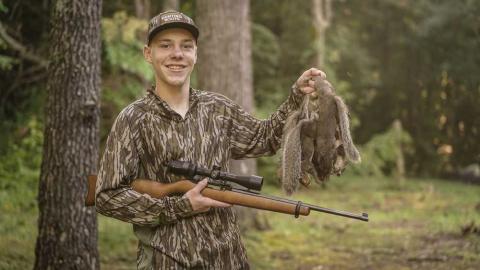Bob Humphrey

It’s probably fair to say that most hunters scout turkeys by sight more than sound and during daylight hours. However, scouting by sound only can be an effective way to locate regular roost sites. And with a special tactic called triangulation, you can even pinpoint roosts far off the road - without ever leaving the roadside.
Timing - A typical scouting mission begins about 45 minutes before sunrise, when turkeys begin gobbling from the roost. On still mornings, and in the right terrain, the sound will carry for over a mile.
Getting Started - Start by driving the local roads, stopping every quarter-mile or so to get out and listen for gobbling. This allows you to scout large areas with minimal effort.
Point A - This step used to be done with a topo map, a pencil and a compass. Hunting and mapping apps make the task even easier. When you hear a gobble, drop a pin on your location and the approximate location where you hear the bird. Then connect the dots with a line, extending it a bit beyond where you think the bird is.
![]()
Point B - Now drive to another location, at least 1/8 mile away and preferably making an angled turn at some point. Next, repeat the steps for Point A, creating another line.
Point C - Repeat the above steps again, drawing a third line and voila! The point where the three lines intersect should be a very close approximation to where the bird is actually roosted.
The more times you do this the better your data set becomes. You may notice a gobbler or gobblers consistently roosting in the same location. Or, they may move a bit. Once you have an idea of the roost location, you can go in and scout on foot, preferably in the middle of the day so you don’t disturb the roost area.
Grab this Mossy Oak Obsession turkey vest and neck gaitor from your local Walmart this season.






























